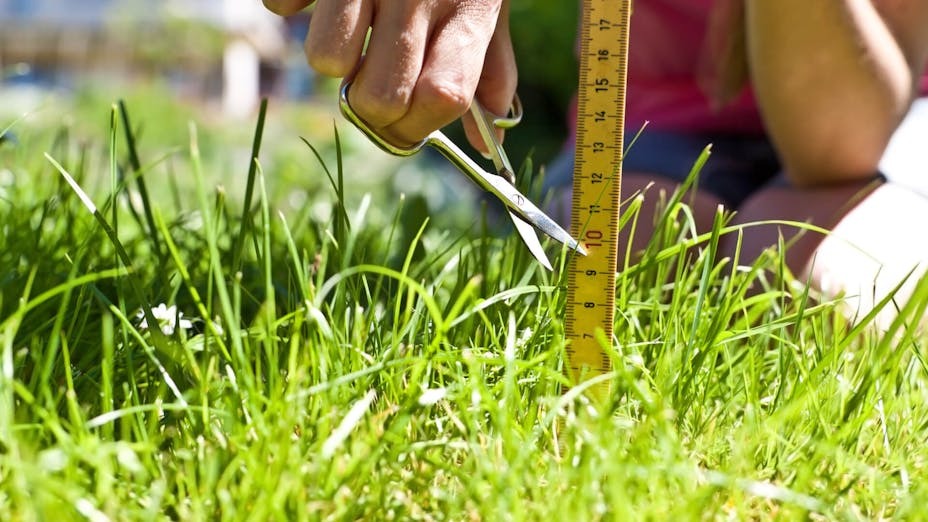
The Ideal Grass Mowing Height
For a superb looking lawn let the weather and seasons be your mowing guide to grass cutting heights.
Mowing height is a compromise between getting the superb looking lawn you want and allowing the grass enough leaf to be healthy. Think of grass a bit like an iceberg; one fifth above and four fifths below ground. Lower the mowing height and you automatically reduce root depth which is not good for the lawn in stressful conditions!
This means you can mow your lawn close but only when optimum conditions prevail; warmth, moderate sunshine, moderate rainfall and adequate fertiliser. This is also when the grass is healthiest and able to recover easily from regular low cutting.
Change these conditions to high stress ones; heat, drought, cold or constant drenching and your lawn will need high mowing to survive.
Let the weather and seasons be your guide to mowing heights. The ‘W’ of weather can help you remember your mowing heights as follows; three points for higher settings and two bottoms for shorter settings. I’m using our Classic lawn as an example for mowing height. Utility and play lawns will be up to 50% longer and fine ornamental lawns will be up to 60% shorter:
- A light topping for the start of spring – the first upright of ‘W’ e.g. 1½ to 2”
- Lower the height as things warm in spring – the first bottom point of ‘W’ e.g. ¾ to 1”
- Raise again for summer if dry – the middle point of the ‘W’ e.g. 1½ to 2” - longer if very dry
- Lower again as growth picks up in early autumn – the second bottom of ‘W’ e.g. ¾ to 1”
- Raise again for the last few cuts of the year – the last upright of ‘W’ e.g. 2 to 3”
Guideline lawn mowing heights
- Ornamental lawns with no rye grass 3/8" to 3/4" inch or 1 to 2 cms
- Low use lawns with or without rye grass 3/4" to 1½ inches or 2 to 4 cms
- Heavy use rye grass lawns 1 to 2 inches or 2.5 to 5 cms
- Shady areas add 50% to the lawn mowing height
- Slopes dry faster so if possible add 50% to the height
- If you have moss in your lawn mow at least ½” above moss height
- In times of stress – extremely wet or very hot and/or dry then mow as high as possible
- New lawns do not have mature roots for nearly 9 months so keep the cut on the high side
- If in doubt mow high
Gently does it
When making adjustments to the mowing height do it in stages, particularly when lowering the height. If two stops on your height setting are needed to go from summer height to early autumn height then mow one setting lower for two cuts then make the final lowering adjustment.
You should only lower the height if this will not stress the mower; therefore the grass should not be too long or wet. Sometimes, particularly if the lawn is dense, you may need to do a cut on your present setting followed by a cut at the lower height a day or two later.
Brown Stripe Syndrome
The grass leaf grows from the central crown on a stem. The stem may not be green but rather a straw colour so that when you mow long grass or when you lower the height you are removing more leaf (the green part) than usual thus exposing the stem. This may leave the lawn or parts of the lawn with a straw colour after mowing. The grass plant will accommodate this by sprouting new leaves lower down the stem so that over the next few cuts the effect will disappear.